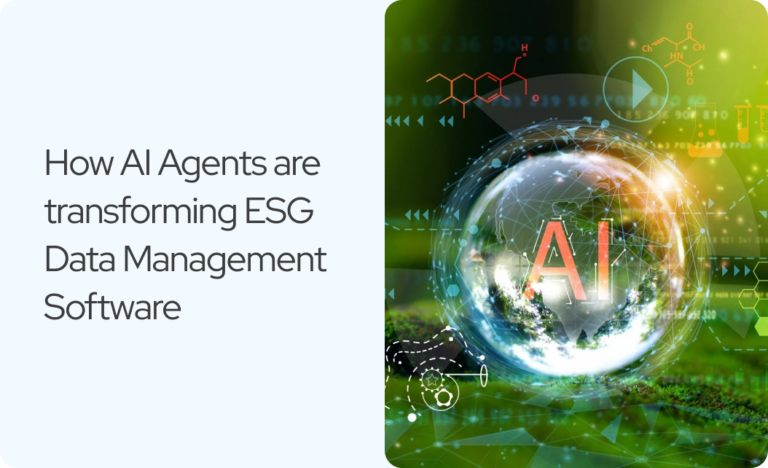The Future of Corporate Responsibility: Implementing ESG Integration for Sustainable Success

In the evolving corporate landscape, Environmental, Social, and Governance (ESG) factors have become critical to business strategy and long-term success. Companies worldwide are increasingly adopting ESG integration to align their financial goals with sustainability commitments. But what does it mean to integrate ESG into corporate frameworks effectively? This blog explores ESG integration strategies, the role of ESG data integration, and how ESG integrated reporting enhances corporate transparency and investor confidence.
Understanding ESG Integration
ESG integration is the process of incorporating environmental, social, and governance factors into a company’s decision-making, risk assessment, and reporting frameworks. Unlike traditional corporate social responsibility (CSR) efforts, ESG integration is data-driven, aligning sustainability practices with financial performance.
The importance of ESG integration lies in its ability to provide companies with a structured approach to sustainable business practices while maintaining profitability. Organizations that prioritize ESG factors can better manage risks, optimize operational efficiencies, and enhance stakeholder trust. As regulatory pressures increase, ESG integration ensures compliance with evolving sustainability standards.
Key Elements of an ESG Integration Strategy
A well-defined ESG integration strategy ensures that sustainability is embedded across all levels of an organization. Here are some essential components:
1. Embedding ESG into Corporate Governance
For successful ESG integration, companies must embed sustainability into their governance structures. This involves:
- Establishing ESG-focused committees at the board level to oversee sustainability initiatives.
- Incorporating ESG performance indicators into executive compensation to drive accountability.
- Setting clear ESG goals and aligning them with overall business objectives.
- Engaging with stakeholders, including investors, customers, and employees, to understand their ESG expectations.
2. Risk Management and Compliance
ESG integration strategies must address both regulatory compliance and emerging risks. Companies should:
- Conduct ESG risk assessments to identify potential environmental and social liabilities.
- Align with global sustainability frameworks such as the Global Reporting Initiative (GRI) and the Task Force on Climate-related Financial Disclosures (TCFD).
- Implement internal controls and governance policies to ensure compliance with ESG regulations and standards.
- Develop scenario analysis and stress testing models to evaluate the impact of ESG risks on business operations.
3. ESG-Driven Investment Decisions
Investors are increasingly relying on ESG data integration to assess financial risks and opportunities. Companies that integrate ESG into their investment strategies can:
- Access sustainable financing opportunities, such as green bonds and ESG-linked loans.
- Improve credit ratings by demonstrating long-term sustainability commitments.
- Attract institutional investors focused on ESG-aligned portfolios.
- Enhance resilience against climate change-related financial risks by aligning investment strategies with sustainability goals.
The Role of ESG Data Integration
ESG data integration is critical for measuring and reporting sustainability performance. High-quality ESG data allows businesses to:
- Monitor progress against sustainability goals and key performance indicators (KPIs).
- Provide accurate and transparent disclosures to stakeholders, investors, and regulators.
- Enhance decision-making through data-driven ESG analytics and predictive modeling.
- Improve operational efficiencies by identifying sustainability trends and areas for improvement.
Effective ESG data integration involves leveraging technology solutions such as:
- AI and machine learning for predictive ESG analytics and sustainability modeling.
- AI Agent technology for real-time reporting and compliance
ESG Integrated Reporting: Enhancing Transparency and Accountability
ESG integrated reporting combines financial and sustainability reporting, providing a holistic view of a company’s overall performance. Unlike standalone sustainability reports, integrated reporting ensures:
- Consistency between financial and ESG disclosures, aligning sustainability with business performance.
- Enhanced comparability for investors and regulators, facilitating better decision-making.
- Improved corporate accountability and stakeholder trust through transparent and standardized reporting frameworks.
- Increased credibility and assurance by adopting independent third-party verification of ESG disclosures.
Best Practices for ESG Integrated Reporting
To maximize the benefits of ESG integrated reporting, companies should:
- Align their reports with recognized ESG reporting standards
- Ensure real-time ESG data availability for continuous reporting and data-driven insights.
- Utilize digital reporting tools and automation to streamline the reporting process and reduce manual errors.
- Develop a stakeholder engagement strategy to communicate ESG performance effectively and respond to investor concerns.
Challenges in ESG Integration and How to Overcome Them
While ESG integration provides significant advantages, it also presents challenges, including:
1. Data Quality and Availability
- Companies often struggle with inconsistent ESG data sources, leading to reporting inaccuracies.
- Solution: Implement standardized ESG data collection, verification protocols, and robust data management systems.
2. Regulatory Complexity
- Different regions have varying ESG reporting regulations, making compliance challenging for multinational organizations.
- Solution: Stay informed on global regulatory trends, adopt a flexible compliance strategy, and leverage compliance software to track regulatory changes.
3. Stakeholder Expectations
- Meeting diverse stakeholder demands, including investors, customers, and regulatory bodies, can be complex.
- Solution: Engage stakeholders in ESG strategy development, maintain transparent communication, and tailor ESG initiatives to address specific stakeholder concerns.
4. Integration Costs and Resource Constraints
- ESG integration often requires substantial investment in technology, data analytics, and personnel training.
- Solution: Start with incremental integration, prioritize high-impact ESG areas, and leverage cost-effective AI Agent solutions which have less Total Cost of Ownership for your organisation
The Future of ESG Integration
With increasing regulatory pressure and investor demand for sustainability, ESG integration is no longer optional. Companies that proactively adopt ESG integration strategies and leverage ESG data integration will gain a competitive edge in the market. Moreover, embracing ESG integrated reporting will enhance corporate credibility, ensuring long-term growth and resilience.
Looking ahead, companies must:
- Innovate by adopting emerging technologies such as AI Agents
- Strengthen supply chain transparency by implementing ESG compliance frameworks.
- Develop sustainability-linked financial products and services to attract responsible investors.
- Collaborate with industry peers, governments, and non-profits to drive collective ESG progress.
As organizations move toward a sustainable future, a robust ESG framework will serve as the foundation for success. Businesses that embed ESG principles into their operations today will be better positioned to navigate future challenges and capitalize on emerging opportunities.
Conclusion
The integration of ESG principles is revolutionizing corporate sustainability and financial decision-making. Companies must embrace ESG integration, implement effective ESG integration strategies, and leverage ESG data integration to stay competitive. Furthermore, adopting ESG integrated reporting ensures transparency and accountability, strengthening investor confidence. As the global business landscape shifts toward sustainability, organizations that prioritize ESG will pave the way for a more resilient and responsible future. By proactively integrating ESG into corporate strategy, businesses can drive positive environmental and social impact while securing long-term financial stability.





